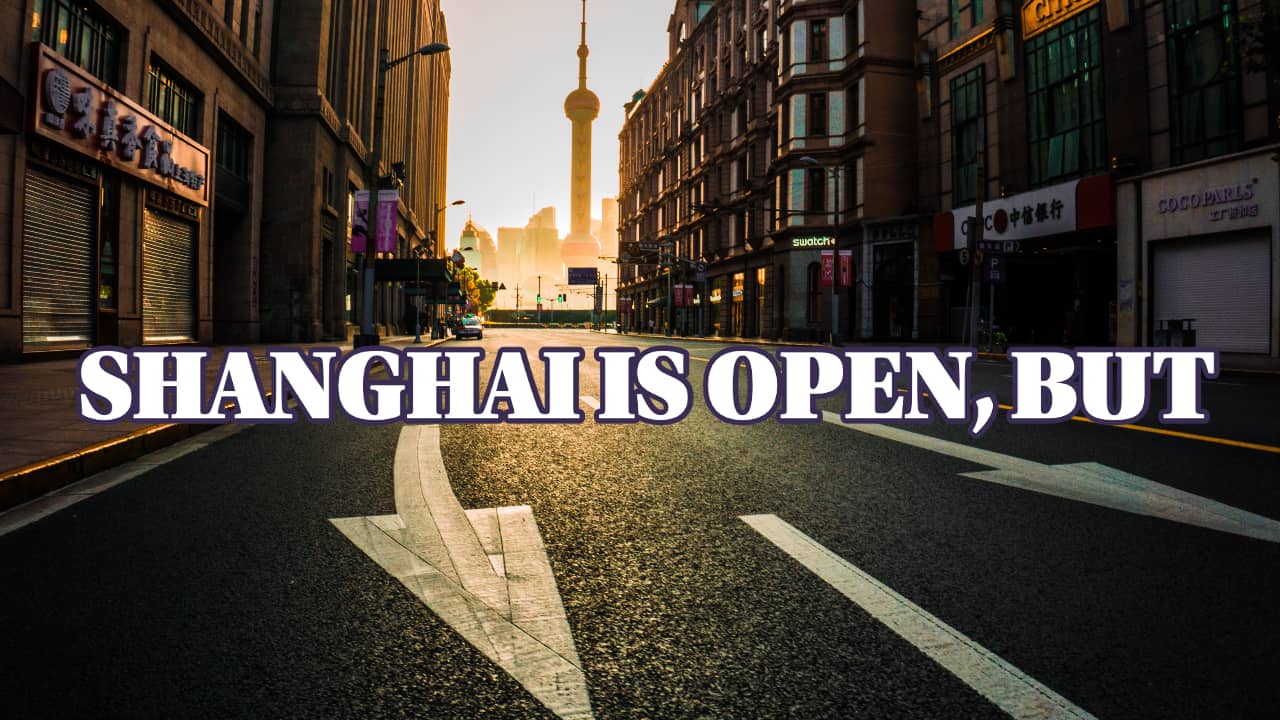
Supply Chains Issues Could Continue, Even as Shanghai Re-opens
3-minute read (4-minute listen)
After two months of lockdown, Shanghai has ended many ‘unreasonable’ conditions, allowing businesses to resume work, starting from June 1.
The gradual reopening occurs just as the peak approaches for the Chinese export season to the retail markets of North America, Europe and the Australasian spring-summer retail season.
However, the supply chain could continue to be an issue, even as the world’s biggest port fully reopens.
Shanghai has been operating at a severely reduced capacity since March. Many shipments have been cancelled, postponed or rerouted to other Chinese cities.
In an interview with Mike Hosking, infometrics economist Bred Olsen explains how the supply chain issues could worsen as manufacturing sites reopen, and the ports in Europe and the US could have the capacity issues to handle the influx of goods.
Mike: Shanghai is back and open for business. The city has fully reopened following these big restrictions since March. Of course, all eyes are on the port and what it means for the movement of goods.
How big of a deal is Shanghai out of all the ports we deal with?
Bred: Shanghai is huge. It’s the biggest port in the world in terms of throughput, and it has been operating throughout this lockdown at a very reduced capacity.
So being able to reopen is encouraging news not only for the world economy but certainly for New Zealand, given how important China is as our major trading partner.
Mike: What about Shenzhen? Is it just as important?
Bred: Anything in China at the moment is critical. We’ve seen much movement between those ports in recent times, depending on the capacity. But that, certainly, hasn’t got us through all the disruptions and some big delays.
Probably the big question now is, given that the ports have been operating but at reduced capacity, with manufacturing sites back on board, we could see the supply chain issues get worse throughout the middle of the year.
Not in China, but the rest of the world, as you will have every ship available filled, particularly to Europe and the US. Will those ports have the capacity to handle this influx of goods?
It comes when we know that things are still very disrupted and makes you wonder about the blockade of ships that might be coming for other ports around the region.
Mike: Does anyone know when it gets smooth again, if it ever gets smooth again?
Bred: The port of Shanghai is saying that they are hoping to get back to the same level of shipments that they had at the start of this year by the fourth quarter, so towards October.
There’s a worry that the next few months could have slippage, particularly in the US, because there’s just so much cargo that wants to get over there.
Interestingly, one of the freight price indexes that gives an idea of how much it costs to move stuff around the world has been going down a touch.
It’s certainly not affordable as it is still five times pre-pandemic level, but it has gotten better recently.
So you do get a bit of a feeling that the momentum is building for things to change, certainly for shipping to become a little easier.
Mike: Any idea of what’s driving this from the Chinese? In other words, when they get another outbreak, do they lock it down again, or have they finally woken up to the fact that we’ve got to move on?
Bred: It’s a difficult thing to try and figure out. There’s much discontent around from people on the ground, from local citizens, urging state officials to open, and a real challenge to keep Omicron under control.
So I think there’s a little bit of give from the Chinese side about wanting to reopen and hit the growth targets they’ve set themselves.
We know that they’ve been very forthright on trying to keep Covid down, to keep those Covid cases as isolated as possible.
I don’t think we should read into this that they’ve completely abandoned that strategy.
And certainly, compared to New Zealand and the rest of the world, they are still facing a much stricter level of operations than we are.
So it is worthwhile keeping in mind, given that we keep hearing about the second wave through winter, I don’t think they are done yet.
Source: Newstalk ZB. This interview was edited for clarity.
P.S. Easy Freight Ltd helps New Zealand importers & exporters to save money on international freight and reduce mistakes by guiding how to comply with Customs and biosecurity rules.
➔ Contact us now to learn how we can assist you.
